Content in this article about Full guideline of 3d modeling (types & services):
2. What are the types of 3D modeling?
4. Importance of 3D modeling in various industries
5. Danthree Studio - 3D Modelling Services
6. What is a digital twin? Meaning
7. What are examples of 3D models?
8. What is 3D modeling used for?
9. What are the mediums of 3D art?
10. What kind of 3D modeling software?
11. What does a Computer-aided design for modeling?
12. What is a 3D Mesh Model? Meaning
What is 3D Modeling?
3D modeling is the process of creating three-dimensional digital representations of objects, characters, or environments using specialized computer software. 3D models can be used in a wide range of applications, including video games, movies, product design, architecture and interior 3D visualization.
The process of 3D modeling involves using a set of tools and techniques to create a digital representation of a three-dimensional object. This can be done using a variety of methods, including polygonal modeling, NURBS modeling, digital sculpting, and procedural modeling, among others.
Once a 3D model has been created, it can be textured, lit, and animated to create a fully-realized digital environment. 3D models can be viewed from any angle or perspective, and can be manipulated and modified as needed.
What are the types of 3D modeling?
Polygonal modeling
Polygonal modeling is a widely used 3D modeling technique that involves creating objects using interconnected polygons to form surfaces. This approach is commonly used in various applications such as video game design, architectural visualization, and product design.
One of the key advantages of polygonal modeling is its flexibility, allowing artists to create intricate 3D shapes using a relatively straightforward set of tools. However, this flexibility also poses some limitations, particularly in creating smooth and curved surfaces using polygons alone. Additionally, working with complex polygonal models can be challenging, particularly when designing large scenes or environments.
Despite these challenges, polygonal modeling remains a popular choice for many artists and designers. The technique allows for the creation of detailed, lifelike objects that can be easily manipulated and edited as needed. With the right tools and expertise, polygonal modeling can be an effective way to create stunning 3D models that meet the needs of a wide range of applications.

Box modelling
Box modelling is a 3D modeling technique that involves creating a 3D mesh model by starting with a simple geometric shape, typically a cube or rectangular box, and then manipulating and refining the shape to create a more complex object.
To create a box model, the artist starts by creating a basic cube or box shape and then subdividing and reshaping it to create the desired form. This process involves adding and deleting vertices, edges, and faces, as well as using various tools to extrude, bevel, and scale different parts of the mesh to create the desired details and contours.
The advantage of box modeling is that it allows for a flexible and intuitive workflow, where the artist can quickly experiment with different shapes and forms by adjusting the mesh in real-time. It is commonly used in character and creature modeling, as well as in industrial design and architectural modeling.
NURBS modeling
NURBS modeling, which stands for Non-Uniform Rational B-Splines, is a popular 3D modeling technique that uses mathematical curves and surfaces to create objects. This approach is commonly used in various fields, including industrial design, automotive design, and aerospace engineering.
One of the key benefits of NURBS modeling is the ability to create smooth, curved surfaces with an exceptional level of precision. NURBS curves and surfaces can be refined and manipulated using a range of mathematical operations, making them ideal for constructing intricate 3D shapes with a high degree of accuracy.
However, NURBS modeling does have some limitations. For example, it can be challenging to create sharp edges and corners with NURBS surfaces. Additionally, working with NURBS models can require specialized tools and techniques, making them more complicated to work with compared to polygonal models.
Overall, NURBS modeling is a highly effective 3D modeling technique that offers a range of benefits and applications in various industries. With the appropriate tools and expertise, artists and designers can create highly accurate and detailed 3D models with complex curves and surfaces that meet the needs of a variety of projects.
Subdivision modeling
Subdivision modeling is a 3D modeling technique that involves using a mesh of simple, low-polygon shapes that are subdivided and smoothed to create more complex shapes. This technique is commonly used in character modeling, as it allows for the creation of organic and realistic shapes and surfaces.
One of the primary benefits of subdivision modeling is the ability to create smooth and detailed surfaces without using complicated geometry. The subdivision surfaces can be manipulated and refined in a similar way to NURBS surfaces, making them a great choice for creating lifelike 3D characters and creatures.
Despite its advantages, subdivision modeling has some limitations. For instance, it can be difficult to create sharp edges and corners using subdivision surfaces. In addition, subdivision models can be more challenging to work with than polygonal models, requiring a more specialized set of tools and techniques.
Nonetheless, subdivision modeling remains a popular and effective technique for creating highly detailed and lifelike 3D models. With the right tools and expertise, artists and designers can use subdivision modeling to create stunning and complex 3D models that meet the demands of various projects.
Digital sculpting
Digital sculpting is a 3D modeling technique that utilizes sculpting tools to replicate the tactile experience of sculpting with clay or other materials. This technique is often used in character modeling and creature design, as it enables the creation of highly intricate and organic shapes.
One of the key advantages of digital sculpting is the high degree of precision it provides in shaping and texturing a 3D model. Sculpting tools can be used to add minute details and texture to a model, which makes it a great choice for creating realistic characters and creatures.
However, digital sculpting also has some limitations. For instance, it can be challenging to produce precise geometric shapes using sculpting tools. Additionally, digital sculpting can be a time-consuming process, necessitating extensive manual manipulation and refinement.
Despite its limitations, digital sculpting is a widely used and effective 3D modeling technique. With the right tools and skills, artists and designers can employ digital sculpting to produce intricate and lifelike 3D models that cater to various project needs.
Boolean modeling
Boolean modeling is a 3D modeling technique that involves creating complex shapes by combining or subtracting basic geometric objects using Boolean operations. The term "Boolean" refers to the mathematical logic used to combine objects in a way that preserves the integrity of their surfaces.
In Boolean modeling, objects are created by intersecting, subtracting, or unioning two or more primitive shapes, such as spheres, cubes, or cylinders. The result is a new object that retains the surface properties of the original shapes.
For example, to create a hole in a cube, a cylinder can be subtracted from the cube using a Boolean operation. Alternatively, to create a ring shape, two cylinders can be unioned together and then subtracted from a larger cylinder.
This modeling technique can be a powerful tool for creating complex shapes and cutouts, especially in industrial design and architectural modeling. However, it can also be challenging to work with, as the Boolean operations can sometimes create non-manifold geometry, which can cause problems when exporting the model to other software or for 3D printing. In addition, it can be difficult to edit or modify a Boolean model once it has been created, as the original shapes are no longer present.
Procedural modeling
Procedural modeling is a 3D modeling technique that employs algorithms and rules to create models. This technique is commonly used in the creation of complex environments, such as cityscapes or landscapes, as it allows for the generation of large numbers of objects or structures with minimal manual intervention.
One of the key advantages of procedural modeling is the ability to create detailed and complex environments with a high degree of variation. The models can be easily adjusted and refined using a set of rules and parameters, making them a great choice for generating a wide range of different objects and structures.
However, procedural modeling also has some limitations. For instance, it can be challenging to create highly specific or unique objects using procedural techniques. Moreover, procedural models can be more challenging to work with than other types of models, as they often require a more specialized set of tools and techniques.
Despite these limitations, procedural modeling is a popular and effective technique for creating detailed and complex 3D models. With the right tools and expertise, artists and designers can utilize procedural modeling to create intricate and stunning 3D models that cater to a range of project needs.
Motion graphics
Motion graphics is a 3D modeling technique used to create animated graphics and visual effects. This technique is commonly used in the film and television industry, advertising, and other forms of media.
One of the primary benefits of motion graphics is the ability to generate dynamic and captivating visual effects that can convey complex ideas or emotions. Motion graphics can be utilized to create everything from simple logo animations to intricate, fully-realized 3D environments.
However, motion graphics also have some challenges. For instance, it can be a time-consuming and labor-intensive process, as it often necessitates the creation of a large number of individual frames or elements. Moreover, motion graphics can be more complex to work with compared to other types of models, as they frequently demand a specialized set of tools and techniques.
Despite these challenges, motion graphics is an effective and widely used technique for generating animated graphics and visual effects. With the right tools and skills, artists and designers can produce stunning and dynamic 3D models that meet the demands of various projects in the film, television, advertising, and media industries.
Some 3D modeled products in motion:
Conclusion of the different types of 3d modelling
By understanding the different types of 3D modeling techniques, you can choose the one that is best suited to your project and ensure that you create the most effective and compelling 3D models possible. Whether you are creating characters for a video game or designing a new product, 3D modeling is an essential tool that can help you bring your ideas to life in a powerful and engaging way.
Importance of 3D modeling in various industries
3D modeling is an essential tool in a wide range of industries, including entertainment, product design, architecture, and engineering. Here are some of the key reasons why 3D modeling is so important in these fields:
- Visualization: 3D modeling allows designers and artists to create realistic, three-dimensional representations of their ideas and concepts. This can help stakeholders and clients to better understand the proposed design or product, and can help to identify potential issues or areas for improvement.
- Efficiency: 3D modeling software can help to streamline the design process, allowing artists and designers to quickly create and modify digital models. This can help to reduce the time and cost of creating physical prototypes, and can help to speed up the design process overall.
- Collaboration: 3D modeling software can be used to facilitate collaboration between designers, engineers, and other stakeholders. By creating a shared digital environment, it is easier to share ideas, make changes, and ensure that everyone is on the same page.
- Customization: 3D modeling software allows designers and artists to create highly customized designs and products that can be tailored to specific needs or requirements. This can help to ensure that the end product is exactly what the client or customer is looking for.
- Realism: 3D modeling software can be used to create highly realistic and detailed representations of objects, characters, and environments. This can help to create a more immersive and engaging experience for users, whether they are playing a video game or exploring a virtual tour of a new building.
Overall, 3D modeling is a powerful tool that can help to enhance the design process, improve collaboration, and create more compelling and engaging visual content. As such, it is an essential tool for a wide range of industries and applications.
Examples of wireframe modeling 3D Models:
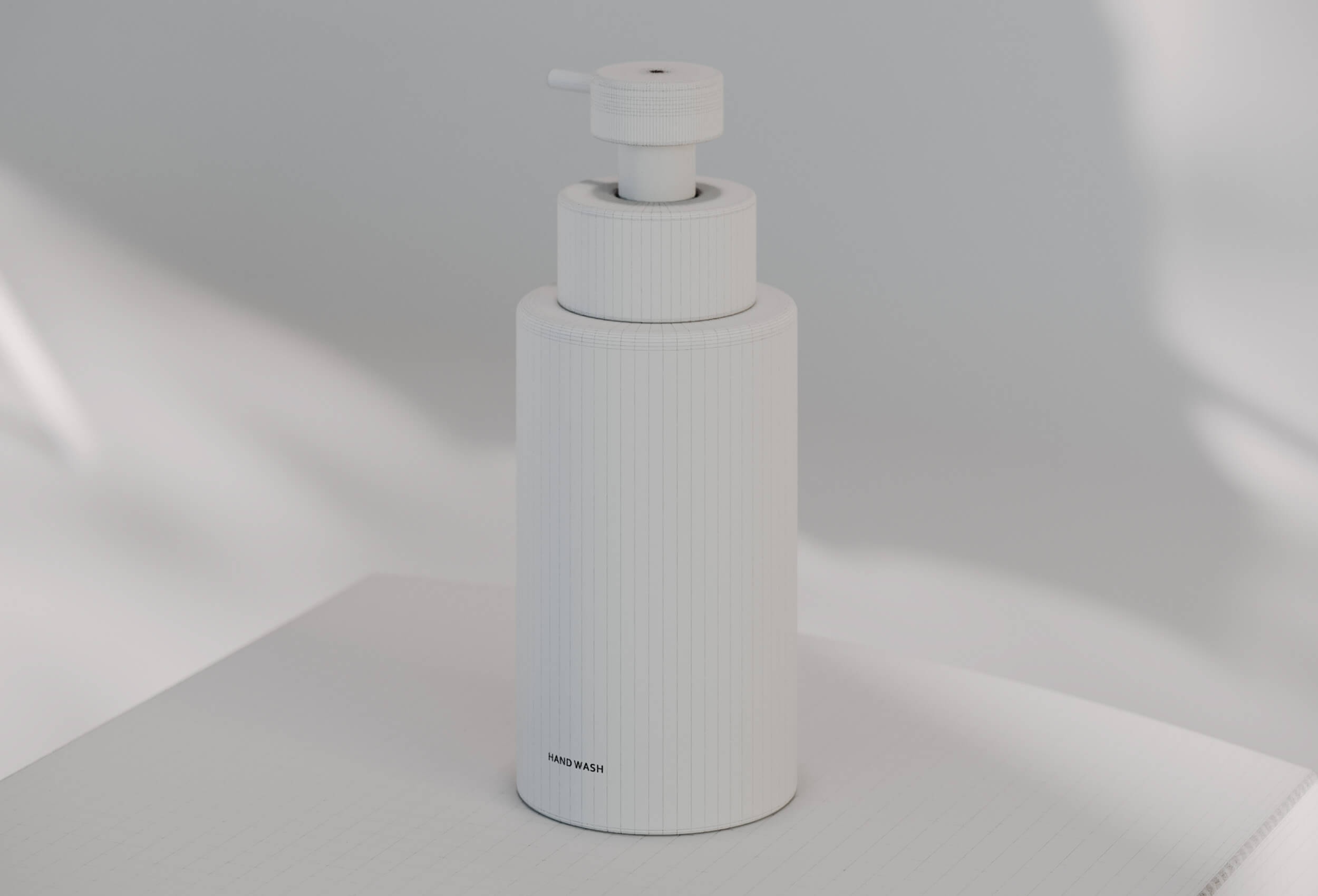
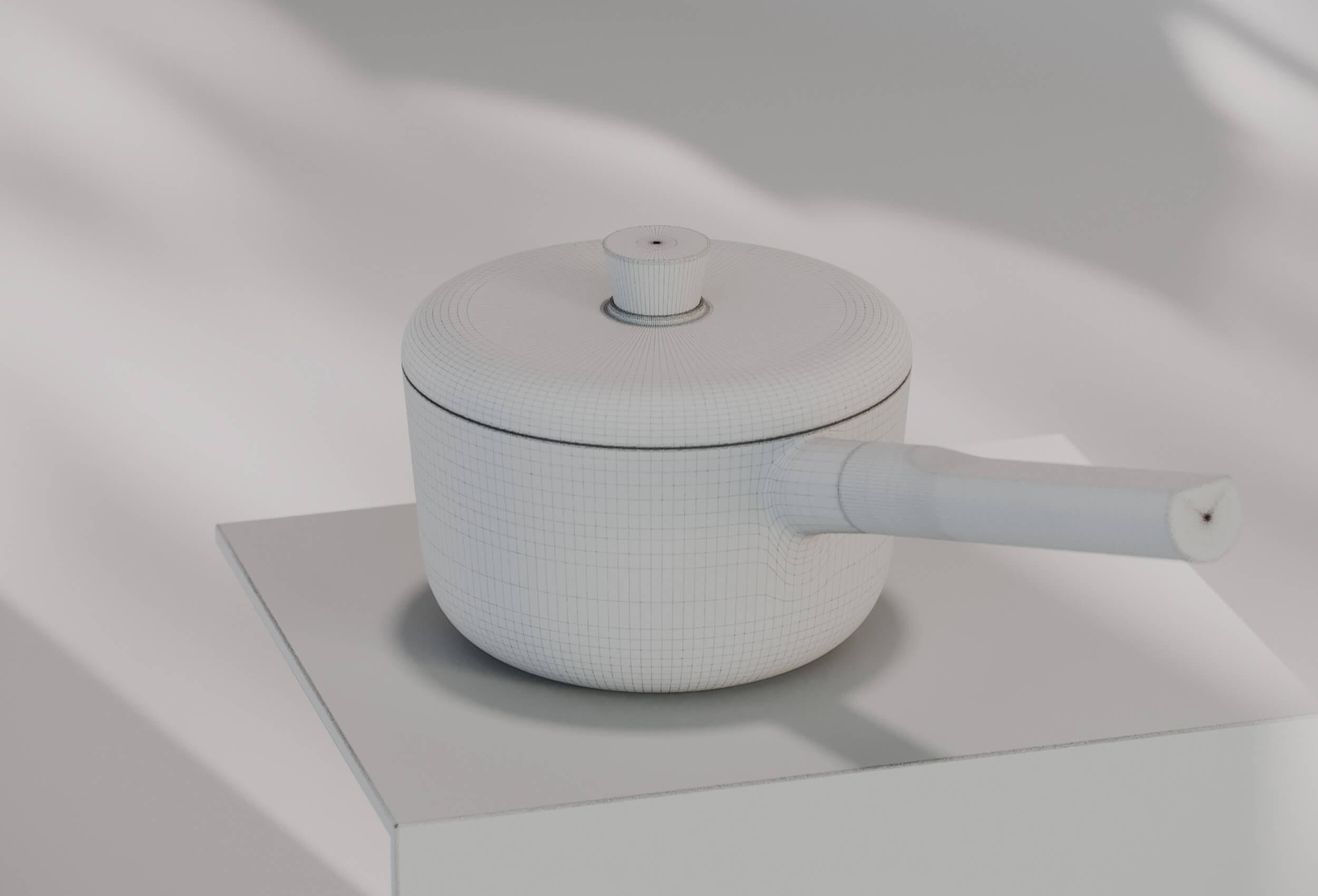
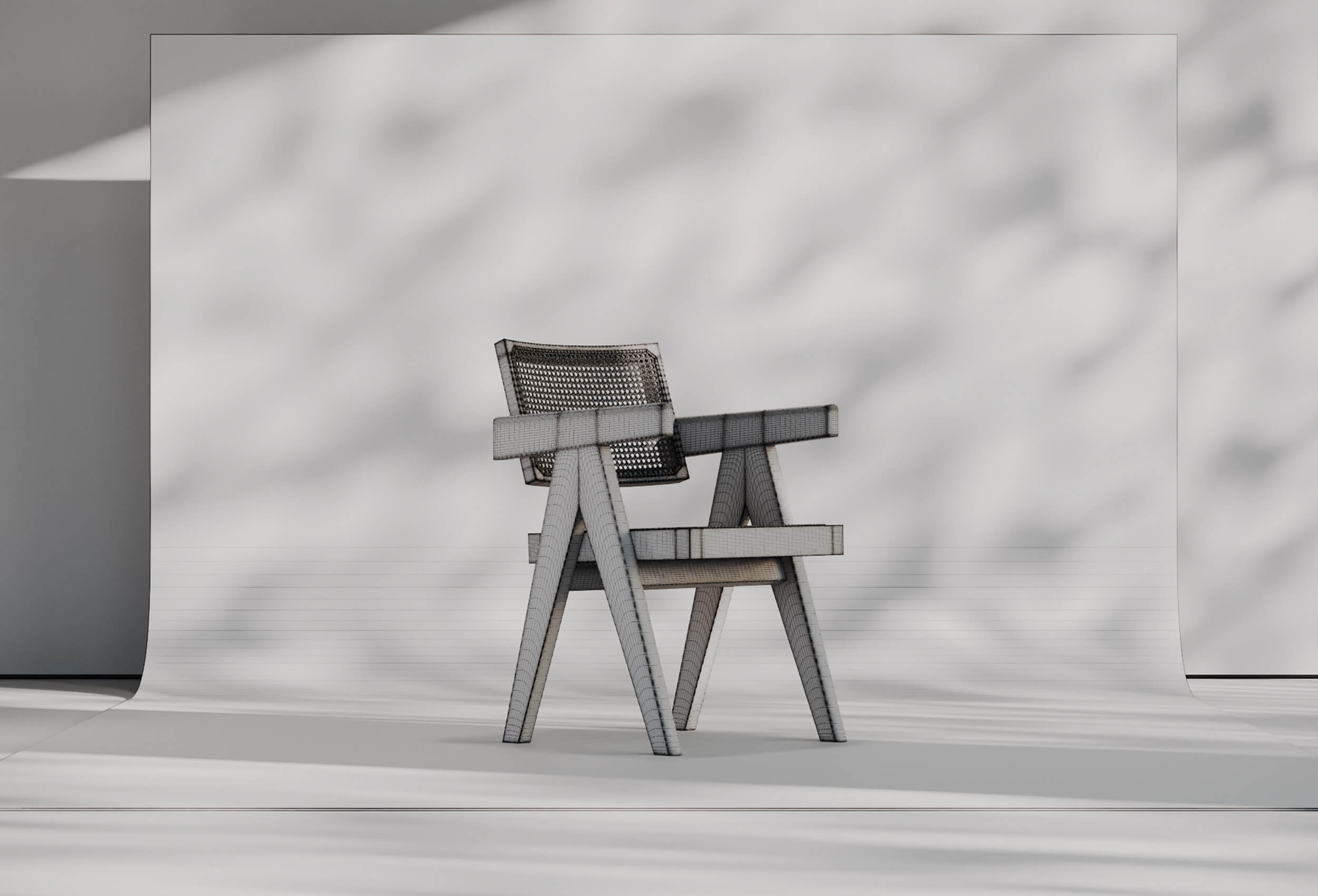

Danthree Studio - 3D Modelling Services
At Danthree Studio, we specialize in creating 3D models for various products, including furniture, home decor, and living items. Our team of experienced designers and 3D artists use the latest software and modeling techniques to produce high-quality, textured polygonal models that accurately represent your product.
We understand the importance of creating visually appealing and functional designs for your products, which is why we use a combination of digital sculpting, parametric modeling, and other computer graphics techniques to ensure that every detail is accounted for. Whether you're looking to create a realistic representation of a product or a more abstract digital art piece, our team has the skills and expertise to bring your ideas to life.
Our 3D modeling services include:
- Digital sculpting: We use digital sculpting techniques to create intricate and detailed models that are perfect for high-quality product renders and real-time applications.
- Parametric modeling: Our team uses parametric modeling software to create models that are easily customizable and scalable, making it easy to adapt to changes in your production process.
- Textured polygonal models: We specialize in creating textured polygonal models that are optimized for use in graphic design and other 3D modeling software.
- Rendering software: Our team uses the latest rendering software to create high-quality, photo-realistic product renders that accurately showcase your product's features and functionality.
- Real-time applications: We can also create real-time 3D models that can be used in virtual and augmented reality applications, allowing your customers to experience your products in a new and immersive way.
Our production process is designed to ensure that we deliver high-quality 3D models that meet your specifications and exceed your expectations. We work closely with our clients to understand their needs and provide regular updates throughout the design process to ensure that we're on the same page.
Our 3D modeling services are ideal for businesses and individuals looking to create visually stunning and functional designs for their products. Whether you're looking to create a new product line or enhance your existing offerings, our team of 3D modeling experts can help.
If you're interested in learning more about our 3D modeling services, please don't hesitate to get in touch with us. We'd be happy to discuss your project in detail and provide you with a quote for our services. Contact us now.
Some benefits of our 3D modeling services:
- Visually stunning and functional designs
- Accurate representations of furniture, home & living products
- Customizable and scalable models
- Photo-realistic product 3d modeling
- Real-time applications for virtual and augmented reality
- Expertise in digital sculpting and parametric modeling
- Regular updates throughout the production process
%202.jpg)
What do we need to create a photorealistic 3D Model?
At Danthree Studio, we specialize in creating photorealistic 3D models of products, from furniture to electronics and beyond. We understand that creating a truly accurate and lifelike 3D model requires a combination of technical expertise, creative skill, and attention to detail. In this article, we'll walk you through our step-by-step process for creating a photorealistic 3D model, and discuss the tools and skills we use to achieve the best possible result.
Step 1: Gather Information
To begin the process of creating a photorealistic 3D model, we first need as much information about the product as possible. This could include existing product pictures or technical drawings, which can be used as reference points to ensure the accuracy of the final model.
Step 2: Create a 3D Model
Once we have all the necessary information, we use computer graphics and CAD tools to create a 3D model of the product. This involves using 3D modeling software to build the product from scratch, using the reference points to ensure accuracy.
Step 3: Texture and Lighting
Once the 3D model has been created, we then focus on texture and lighting. This is where the digital art and graphic design skills of our team come into play, as we work to ensure that the final product looks as realistic as possible. We use specialized software to apply realistic textures to the model, and then use lighting to create shadows and reflections that add depth and realism to the final product.
Step 4: Rendering
Once the model is fully textured and lit, we then use rendering software to produce high-quality images of the model. This allows us to create photorealistic images that can be used for marketing and advertising purposes, or even for virtual and augmented reality applications.
Our Core Skills
At Danthree Studio, we use a variety of skills and tools to create our photorealistic 3D models. These include:
- Expertise in 3D modeling software, including programs like Blender, Maya, and 3DS Max.
- Strong technical skills in computer graphics and CAD tools.
- Knowledge of digital art and graphic design principles, including lighting and texture.
- Experience with rendering software, such as V-Ray and Arnold.
- Ability to work with a variety of file formats, including OBJ, STL, and FBX.
- Familiarity with real-time applications, including virtual and augmented reality.
In conclusion, creating a photorealistic 3D model requires a combination of technical and creative skills, along with a dedication to accuracy and attention to detail. At Danthree Studio, we have the expertise and tools necessary to create stunning, lifelike 3D models that can help showcase your product in the best possible light.
If you're interested in learning more about our 3D modeling services, please don't hesitate to get in touch with us. Contact us.
What is a digital twin? Meaning
A digital twin is a virtual representation and a visual representations of a physical object or system that is designed to simulate its behavior and performance in the real world. Digital twins are created using a wide range of data, including design and manufacturing data, sensor data, and other information about the object or system.
The purpose of a digital twin is to create a highly accurate and detailed virtual model of a physical object or system that can be used to monitor and optimize its performance. This can be particularly useful in complex systems such as factories, power plants, and transportation networks, where it can be difficult to monitor and analyze performance in real-time.
Digital twins can be used to simulate different scenarios and test the impact of various changes or modifications to a system. They can also be used to predict maintenance and repair needs, optimize energy consumption, and identify potential issues before they occur.
Digital twins are becoming increasingly important in a wide range of industries, including manufacturing, energy, and transportation. By creating virtual models of physical objects or real object and systems, companies and organizations can gain valuable insights into their performance and optimize their operations to improve efficiency, reduce costs, and increase productivity.
Get a quote for your next 3D Modeling Project or Visualization. Get a quote.
What are examples of 3D models?
Here are some examples of 3D Models from Danthree Studio (CGI & 3D Visualization studio for the furniture, home & living industry):
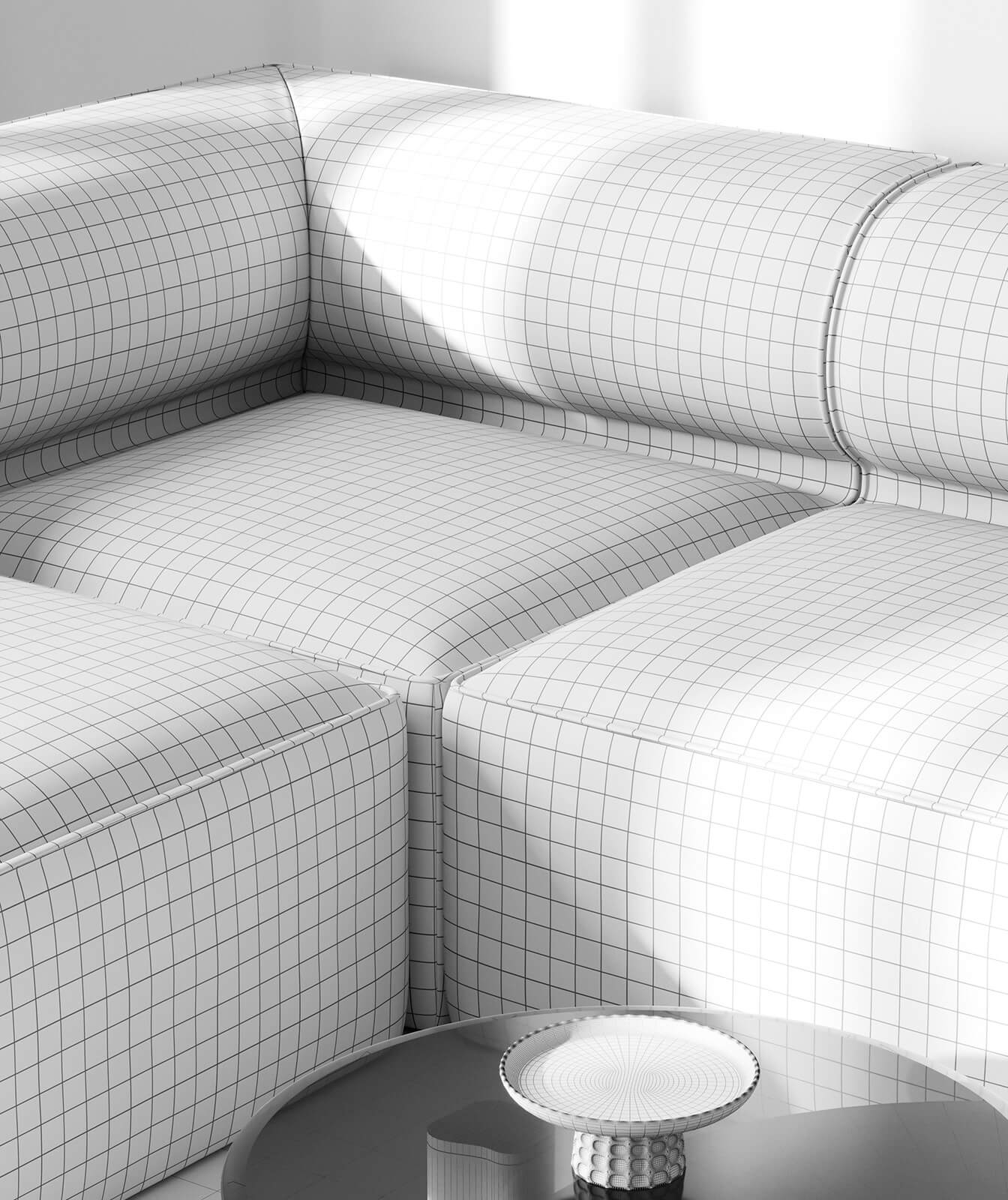
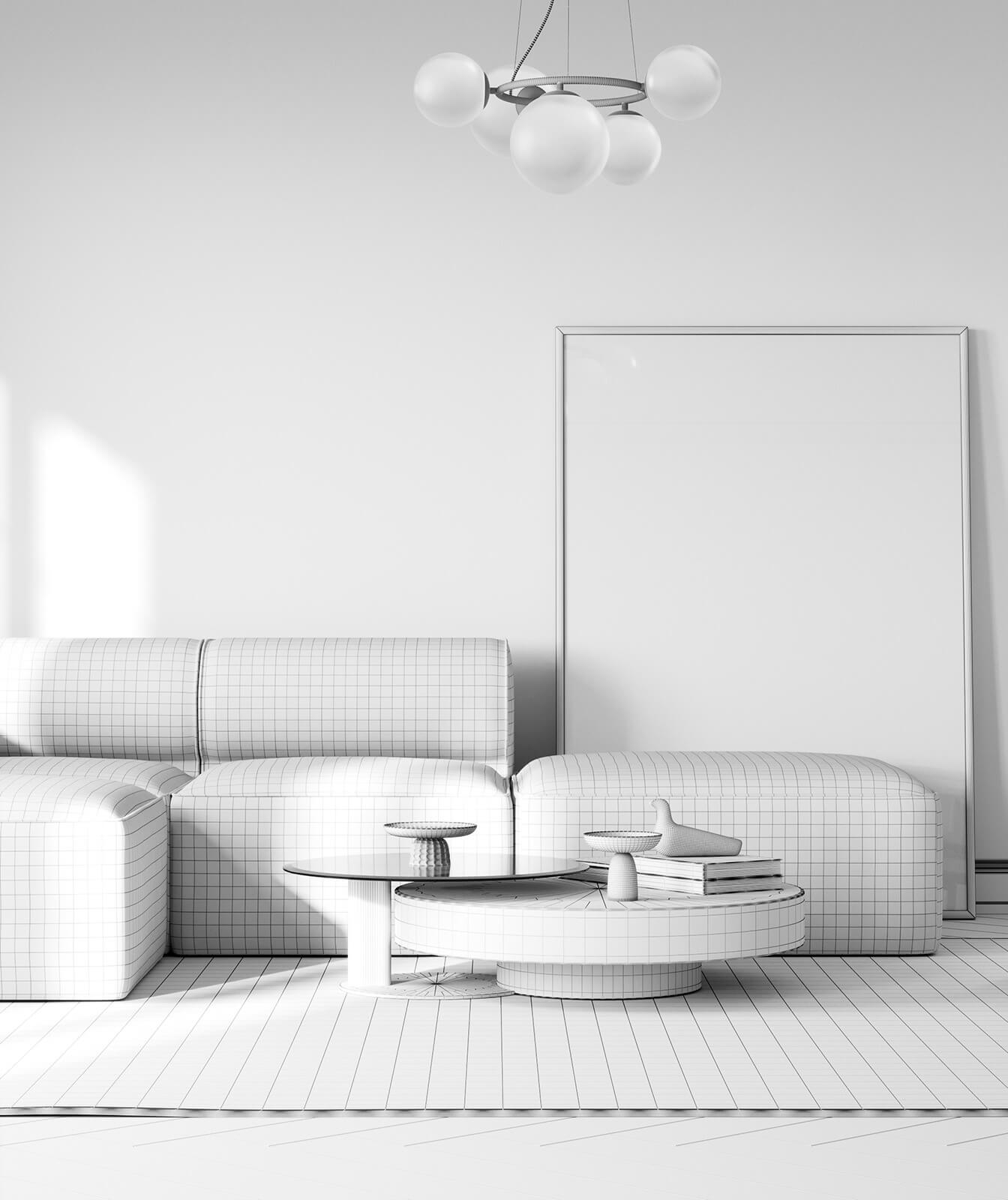
What is 3D modeling used for?
3D modeling is used for a wide range of applications in many different industries. Here are some of the most common uses of 3D modeling:
- Entertainment: 3D modeling is widely used in the entertainment industry, particularly in video games, movies, and television. It is used to create realistic and detailed environments, characters, and objects, and can be used to create compelling and immersive visual experiences for viewers and players.
- Product design: 3D modeling is often used in the product design industry to create digital prototypes and models of new products. It allows designers to test and refine their ideas quickly and efficiently, and can help to identify potential issues or areas for improvement.
- Architecture: 3D modeling is widely used in architecture to create detailed and realistic visualizations of buildings and other structures. It can help architects and designers to test and refine their designs, and can help clients to better understand what the final product will look like.
- Engineering: 3D modeling is used in engineering to create detailed and accurate representations of mechanical parts and systems. It can help to identify potential issues or areas for improvement, and can be used to test and refine designs before they are manufactured.
- Medical imaging: 3D modeling is used in medical imaging to create detailed and accurate representations of organs, tissues, and other structures in the human body. It can be used to aid in diagnosis and treatment planning, and can help to improve patient outcomes.
Overall, 3D modeling is a versatile and powerful tool that is used in a wide range of applications in many different industries. It allows designers and engineers to create realistic and detailed representations of their ideas and concepts, and can help to streamline the design process and improve collaboration.
What are the mediums of 3D art?
3D art can be created using a variety of mediums, each of which has its own strengths and weaknesses. Here are some of the most common mediums used in 3D art:
- Computer software: 3D art can be created using specialized computer software, such as Blender, Maya, or 3DS Max. These software packages allow artists to create and manipulate 3D objects and environments using a wide range of tools and techniques.
- 3D scanning: 3D art can also be created using 3D scanning technology. This involves using specialized scanners to create a digital model of a real-world object or environment, which can then be manipulated and modified using 3D software.
- 3D printing: 3D art can be created using 3D printing technology, which allows artists to create physical objects from digital 3D models. This can be a powerful way to bring 3D art into the physical world, and can be used to create sculptures, figurines, and other physical objects.
- Virtual reality: 3D art can also be created for virtual reality (VR) environments, which allow users to explore and interact with 3D objects and environments in a fully immersive way. This can be a powerful way to create engaging and interactive experiences for viewers and users.
- Augmented reality: 3D art can also be created for augmented reality (AR) environments, which overlay digital 3D objects onto the real world. This can be used to create compelling and interactive visual experiences for viewers and users.
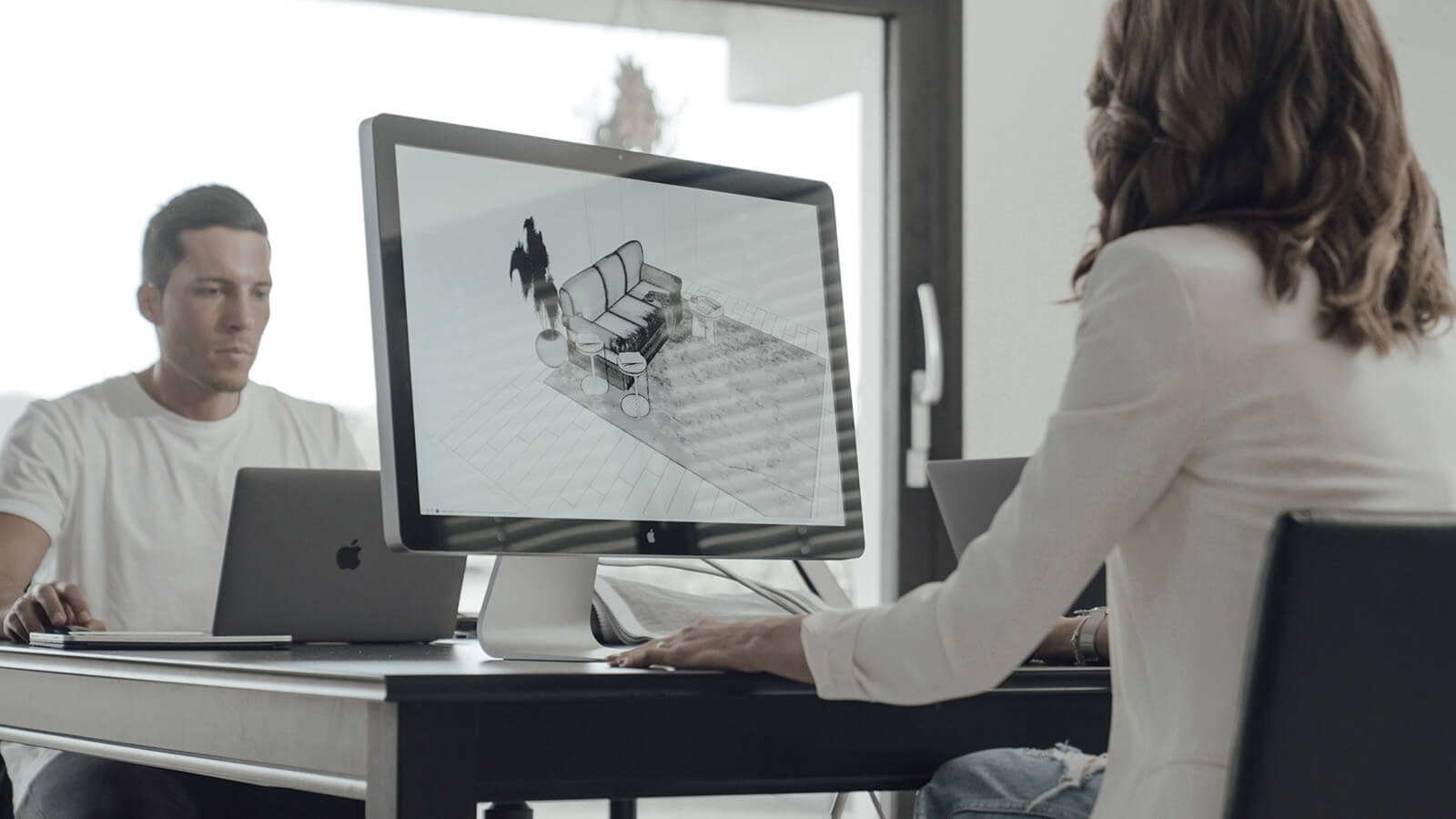
What kind of 3D modeling software?
There are many different types of 3D modeling software & modeling tools available, each with its own strengths and weaknesses. Here are some of the most popular types of 3D modeling software:
- Blender: Blender is a free and open-source 3D modeling tool that is widely used in the entertainment industry. It includes a wide range of tools and features for creating 3D models, including polygonal modeling, sculpting, and animation. The software is for basic shapes and complicated 3d shapes and complex surfaces.
- Autodesk 3ds Max: Autodesk 3ds Max is a powerful 3D modeling software that is widely used in the architecture, engineering, and construction industries. It includes tools for creating highly-detailed and accurate 3D models, as well as animation and rendering features.
- Autodesk Maya: Autodesk Maya is another popular 3D modeling software that is widely used in the entertainment industry. It includes a wide range of tools and features for creating highly-detailed and realistic 3D models, as well as animation and rendering features.
- ZBrush: ZBrush is a digital sculpting tool that is widely used for creating highly-detailed and organic 3D models, such as character animation and creatures. It includes a wide range of tools and features for complex surfaces - sculpting and painting 3D models.
- SketchUp: SketchUp is a 3D modeling software that is widely used in the architecture and design industries. It includes a user-friendly interface and a wide range of tools for creating 3D models of buildings and other structures.
- Cinema 4D: Cinema 4D is a 3D modeling & animation program - software that is widely used in the entertainment industry. It includes a wide range of tools and features for creating complex surfaces - 3D models, as well as animation and rendering features.
What is solid modeling?
Solid modeling is a 3D modeling technique that is used to create digital representations of physical objects with a high level of geometric accuracy. In solid modeling, objects are created by defining their volume and surface area using mathematical equations and algorithms.
Solid modeling is widely used in the engineering and manufacturing industries to create digital models of mechanical parts and systems. These models can be used to test and refine designs before they are manufactured, and can help to identify potential issues or areas for improvement.
One of the main advantages of solid modeling is its ability to create highly accurate and detailed models that can be used for engineering analysis and simulations. Solid models can also be used to create technical drawings and documentation that can be used in the manufacturing process.
There are several types of solid modeling techniques, including constructive solid geometry (CSG), boundary representation (B-rep), and swept volume modeling. Each of these techniques has its own strengths and weaknesses, and may be better suited to different types of 3D modeling projects.
Overall, solid modeling is a powerful and important 3D modeling technique that is used in a wide range of industries to create accurate and detailed digital models of physical objects. By using solid modeling software, engineers and designers can create effective and efficient designs that meet their specific requirements.
What does a Computer-aided design for modeling?
Computer-aided design (CAD) is a software application that is commonly used for 3D modeling. It is specifically designed to aid in the creation, modification, and analysis of 3D models, using advanced mathematical algorithms to simulate and optimize the design process.
CAD software provides a range of tools and features that enable designers and engineers to create detailed and precise 3D models. This can include tools for sketching and creating basic shapes, as well as advanced features for editing, manipulating, and refining models. CAD software can also be used to analyze models and simulate real-world conditions, helping to identify potential issues or areas for improvement.
Overall, CAD software plays a crucial role in many industries, including architecture, engineering, product design, and manufacturing. Its ability to aid in the creation of detailed and accurate 3D models has revolutionized these fields, helping to improve efficiency, reduce costs, and produce high-quality products and designs.
What is a 3D Mesh Model? Meaning
A 3D mesh model is a digital representation of a three-dimensional object created by defining the shape and surface characteristics of the object using a series of connected polygons, called a mesh. The mesh consists of a set of vertices (points in space), edges (connecting lines between vertices), and faces (flat polygons formed by connecting groups of vertices with edges).
The 3D mesh model provides a detailed representation of the object's geometry and surface texture, allowing it to be viewed and manipulated in a virtual environment. It is commonly used in computer graphics, animation, and video game development, as well as in fields such as engineering, architecture, and product design. 3D mesh models can be created using specialized software, often through the process of 3D modeling, which involves defining the shape of the object by manipulating the vertices and edges of the mesh until the desired form is achieved.
FAQ
What is 3D modeling?
3D modeling is the process of creating a three-dimensional digital representation of objects or environments using specialized 3D software. These models can be used in various applications like video games, movies, product design, architecture, and interior 3D visualization.
What are the different types of 3D modeling techniques used by 3D Visualization Studio?
We use a variety of techniques such as polygonal modeling, box modeling, NURBS modeling, subdivision modeling, digital sculpting, Boolean modeling, procedural modeling, and motion graphics. Each technique has its unique benefits and is suited to different kinds of projects.
What are the advantages and limitations of using polygonal modeling?
Polygonal modeling offers flexibility, allowing the creation of intricate 3D shapes. However, creating smooth and curved surfaces using polygons alone can be challenging, and working with complex models can be demanding, especially for large scenes or environments.
What is the importance of 3D modeling in different industries?
3D modeling is crucial for a wide range of industries like entertainment, product design, architecture, and engineering. It enhances visualization, improves efficiency, encourages collaboration, allows for high customization, and creates a realistic portrayal of objects, characters, and environments.
What kind of 3D modeling services does Danthree Studio offer?
At Danthree Studio, we offer various services such as digital sculpting, parametric modeling, creating textured polygonal models, using the latest rendering software, and creating real-time 3D models for virtual and augmented reality applications.
What kind of products does Danthree Studio specialize in 3D modeling?
We at Danthree Studio specialize in modeling various products like furniture, home decor, and living items. Our team uses the latest 3D software and techniques to ensure that every detail of your product is accurately represented.
Can the 3D models be customized and scaled according to my needs?
Yes, we use parametric modeling software to create models that are easily customizable and scalable. This makes it easy to adapt to changes in your production process.
How does Danthree Studio ensure the quality of 3D models?
Our production process is designed to deliver high-quality 3D models that meet your specifications. We work closely with our clients to understand their needs and provide regular updates throughout the design process.
3D Modeling - 3D Studio (types, full guideline & services)
3D Modeling - 3D Studio (types, full guideline & services) All about digital twin, 3d mesh modelling, types, 3D digital sculpturing and more.






